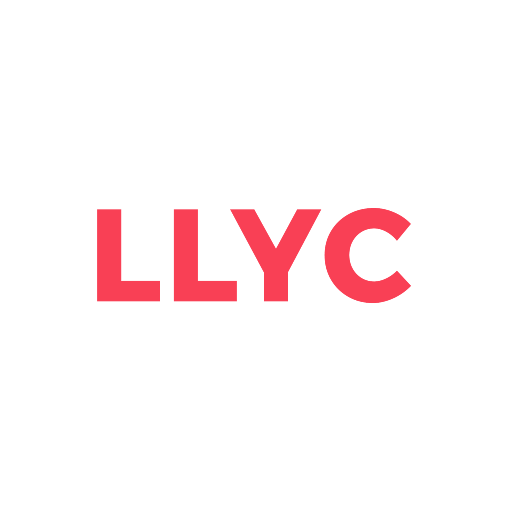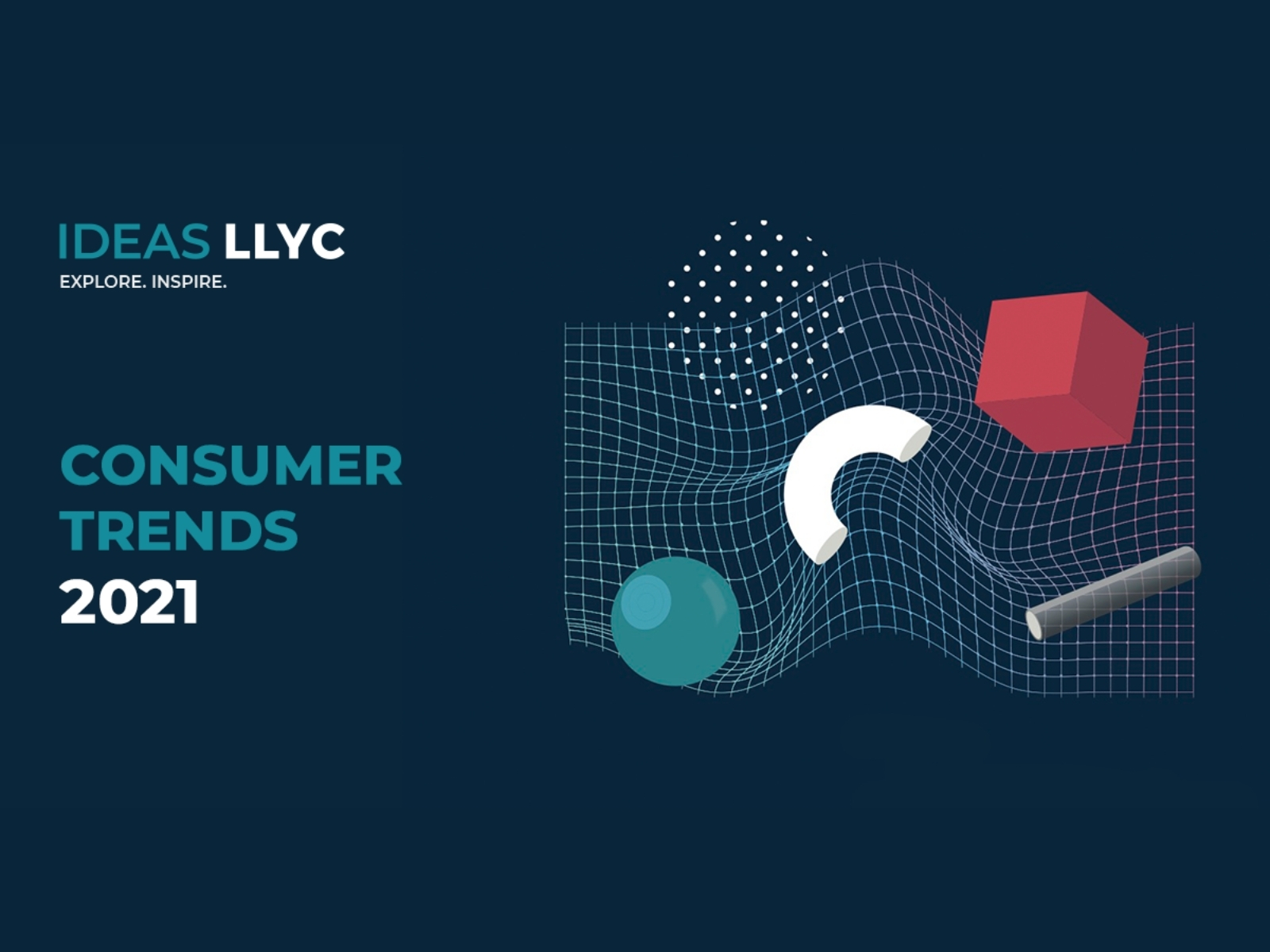LLYC 05 Jun 2020 // 5:17PM GMT

Two weeks ago, I shared some thoughts on what senior executives can do to stop the economic hemorrhage brought about by the COVID-19 crisis and the keys to withstanding the impact on companies from a perspective focused on the organization’s purpose, stakeholder and capital management.
For organizations that have been able to survive these stages of the crisis, the time has come to focus on the short-, medium- and long-term recovery process. This means I can write again and share some ideas that we hope will be useful to you over the coming weeks and months.
As we saw in the previous document, running a business is never easy but it’s perfectly clear that leading is always difficult and the time has now come to get ready for the recovery.
Return. Adapt. Change
The various analyses and studies published in recent weeks about the socio-economic impact of the health crisis suggest that how we will emerge from the crisis remains a mystery that will greatly depend on what happens in each stage of the crisis and the COVID-19 containment process.
The study drawn up by the Deloitte Consulting Monitor entitled “COVID-19 Impact and Consumption and Distribution Recovery Scenarios” on 27 March shows a curve that suggested a return-to-business process over the course of spring, a gradual economic recovery over the summer and autumn in which adaptation to the new reality will be key and a change consolidation process over the course of 2021.
A similar report drawn up by McKinsey entitled “COVID-19 in Spain: The dual imperative of health and economic well-being” (INCLUDE LINK) on 6 April offers some insight into the three stages that CEOs will need to manage over the coming months.
Flatten the curve
The first stage revolves around preparing a resumption of business, during which a double focus must be placed on minimizing the negative impact on public health and on exercising leadership to minimize the economic and employment impacts that will come with the financial downturn. This will be a predominantly technical stage and focused on the short term.
For all managers, both within the healthcare system and in economic circles, “flattening the curve” has been and will continue to be the mantra to follow. It has been fully explained in terms of healthcare issues but certain aspects of this approach in economic terms need further explanation.
The commitment from politicians and company managers should be to focus on minimizing the depth of the economic impact from the downturn because facing a process of recovery from a negative impact of -4.6% of GDP is not the same as facing one that starts at -12.2% of GDP. It is therefore important for the economic activity latency stage to be as short as possible for those activities that have been forced to stop. We need to ensure the continuation of all economic activities that can be carried out under safe health conditions.
Such initiatives as #EstoNoTieneQueParar https://estonotienequeparar.com/ [ThisDoesn’tHaveToStop], which is being promoted by the agri-food chain promoted by Mercadona, is a clear example of how civil society is assuming responsible leadership for economic affairs over and above the competent public authorities.
The second core aspect of this work lies in shortening the duration of the economic downturn and accelerating the economic recovery curve. As stated in the aforementioned report by McKinsey, too much uncertainty persists around what the recovery curve will look like. This means that the focus should be placed on managing those levers that companies and CEOs can indeed control in order to be prepared to accelerate the return to operational business and, above all, reactivate consumption.
A good example of the initiatives aimed at reactivating consumption is the #SaveTourism campaign focused on “Don’t cancel, postpone” https://sextaplanta.com/no-canceles/ or the campaign encouraging Spanish tourists to travel within Spain this summer being launched by hotel owners.
Depending on the management capacity of each CEO, the focus for this stage should be placed on reactivating consumption and on ensuring that the operational part of their organization is able to respond swiftly to that reactivation
Accelerate de upturn
When the time comes to reopen for business again and that which has been made possible, a new stage will begin in which the key will lie in the ability of organizations to adapt to the temporary circumstances that will arise around the company’s critical stakeholders. This stage will have a tactical focus and be developed in the medium-term, meaning the second half of 2020 for us.
If an organization is able to swiftly and efficiently adapt to those circumstances, it will ensure a steeper curve towards economic recovery. This will be a matter of agility, flexibility and openness to change, meaning that the most hierarchical organizations that are slowest at making decisions will have the greatest difficulty in shortening their period of return to business.
Various studies can already be found on the Internet that explain which circumstances are going to have an impact on certain stakeholders, but as I said in my previous article, the key to the challenge for CEOs lies in seeing the bigger picture and being able to prioritize the various keys to the various stakeholders and take quick decisions. The second key will lie in team efficiency during implementation, the ability to “catch the wave and surf” greatly depends on how teams are set up and the culture of ongoing improvement and adaptation that has been built over previous years.
Below is a summary of some keys per stakeholder group that seem to be generating consensus among thinkers as keys to be considered for this stage.
Consumer:
Companies need to focus their value proposition on meeting the needs and expectations of consumers and clients. In this case, the earthquake has been so intense that temporary changes have probably occurred that will force us to review how we bring the product or service to end users, payment deadlines, how we communicate the product or service and how we resolve new requirements on safety, confidence or reliability.
Consumers need to feel understood, accompanied and part of a community. Companies that are making an effort to be part of the health crisis solution and adapting their offer to the new reality will experience a lesser impact over a shorter time.
Nonetheless, it should not be forgotten that – according to the study by Deloitte Consulting that I mentioned earlier – it seems clear there will be an income shrinkage due to both objective and subjective factors that will cause people to consume less.
Employees:
As we read in “Statement on the Purpose of a Corporation” by Business Roundtable, companies will need to constantly invest in their human capital and manage it properly.
Without losing focus of everything that needs to be done to meet other requirements in the Maslow Pyramid, we are at a stage where basic needs are essential; those related to health and the guarantee of conditions to prevent contagion. Meanwhile, security needs – those related to saving jobs and the modus vivendi of the people working at your organization – will become enormously important for engaging with your workforce.
This does not mean you shouldn’t continue to encourage teleworking, work-life balance, diversity, talent management or involving people in the organization’s purpose to create the culture we seek.
This information can be expanded in the LLYC IDEAS drawn up by my colleagues in the Talent Engagement team entitled “COVID-19: Keys to managing engagement with talent during the uncertainty”.
Suppliers:
For those suppliers who are genuine colleagues of your organization in the creation of value, those with a genuinely important role in contributing to your own value chain, it essential for them to feel a part of your operations and for them to be treated fairly. It is essential that each one receives according to their contribution and they should be treated in ways that respect human rights and with the transparency they deserve so they get involved in your recovery process.
These are easy things to say but tough to implement because we have spent decades in which it has been more important to raise the value of one’s own income statement at the cost of detracting value from the income statement of suppliers. But they need to be treated as an essential part of our business and are equally entitled as we are to survive. In many cases, our own sustainability depends on theirs and I believe it is good to remember the aphorism “a chain is only as strong as its weakest link”.
Paying invoices on time, or even paying them early if your financial situation allows (as several major Spanish companies are already doing), is an effective way to look after them. Another way might be to raise the profile of your business relaunch plans and ask them for their support on that path.
Citizens:
Companies are corporate citizens that cohabit in society with individuals and legal entities. The common social good for all remains the same; if a society develops and advances, this is good for people as well as for companies and the other organizations that coexist in it.
Given their size and organizational capacity, companies have a major role to play in value creation through taxes, jobs and economic activity, which drive society towards well-being. We should therefore move beyond the management of economic capital and incorporate the management of environmental impacts and the generation of knowledge and technology capable of driving us all forward into the corporate day-to-day.
Incorporate insight into how the company has included the UN Sustainable Development Goals into your day-to-day and how we update priorities during the management of COVID-19 to bring added value to the new urgency for SDG 2 on Zero Hunger, as done by companies in the agri-food chain, distribution and hospitality sectors; SDG 3 on Health and Well-being, as done by socio-healthcare and pharmaceutical companies; SDG 7 on Affordable Power, as supported by electricity and gas companies; and SDG 8 on Employment, as done by those business leaders who have prioritized saving jobs over profits. This crisis has shown that Corporate Responsibility has come of age and become essential to business management.
Shareholders:
As share values tumble in all markets during a steep economic downturn, it should be remembered that, in the 2020 Davos Manifesto, the World Economic Forum defined a universally accepted framework for demonstrating the creation of sustainable value in which Environmental, Social and Corporate Governance (ESG) should join the measurement of business performance.
At this moment of truth, it should also be remembered that in his annual letter to CEOs, Larry Fink, CEO of BlackRock, (ADD LINK) said that ESG criteria are “a decisive factor in long-term company expectations” and added that they would not be investing any more in businesses that posed a high risk to sustainability.
This is a good time to demonstrate that through action, and the companies that do so will obtain a significant competitive advantage for the recovery stage.
Change
Since the start of this century, we have assumed that the speed of change made long-term strategic plan-based management structures useless and we have switched to medium- or short-term action plans in which success was calculated according to performance by the income statement for the year.
It’s true that this means we avoid tripping over immediate obstacles, but it’s very likely that by avoiding the next tree in our path we will find ourselves lost in a forest clearing in a few year’s time or even dead, devoured by a competitor.
We need to regain our long-term outlook and strategic approach based on the analysis of micro-trends that lead to changes in the competitor scenario and directly impact the needs and expectations that our stakeholders have of us as a company.
It is no different in this case. We should include a far-reaching analysis in the 2021 planning process of how COVID-19 has accelerated the arrival of various trends and how it is impacting stakeholders. Once this analysis is done, we need to have the courage and bravery to include it in our strategic deliberations and change whatever needs to be changed to face next year and be able to say in a few year’s time that, not only did we overcome the COVID-19 crisis, but we emerged stronger and wiser, more competitive and more sustainable.
To make this reflection easier, I share with you some thoughts on the micro-trend reports drawn up regularly by the consultancy firm WGSN, which may offer some useful clues in this process.
The VUCA world (Volatile, Uncertain, Complex and Ambiguous) has arrived; uncertainty has led to concerns over the economic, financial and socio-employment impact that will feature heavily in the months ahead.
The fear factor will lead to behavior associated with reactions to stress resulting from the “trauma” generated by COVID-19. The need for protection, security and positive messages will have an impact on how we interact as companies with stakeholders.
A return to hyperlocalism will receive attention in the coming months; a rejection of all things global combined with a fear of travelling will mean that local things, neighbors, the family, friends, the village and all things close-by will gain weight in behavior and consumption patterns. Adapting the offer to local concepts and supporting a recovery of the nearby approach will be appreciated.
Climate emergency criteria will be strengthened but there will be stronger demands to stop talking and start doing, meaning that value will be given to those companies that strengthen their lines of real action and place a greater focus in their value propositions on looking after the environment and on these issues in their relations with stakeholders. People want to play a larger role and get involved in the doing.
This crisis has reminded us how important family is, especially our elderly relatives. Generational balance will be a growing trend in the coming months. Creating offers adapted to the elderly, accepting senior human capital and highlighting the value of experience will be a line of action with a positive impact in the future.
The coronavirus has accelerated various important geopolitical changes. The rise of China and the creation of relationships based on trading in protective and medical equipment will have rapid effects. The search for new markets to reactivate the economy will force us to focus our questions on Africa again. The relocalization of manufacturing processes to gain productive self-sufficiency will generate business opportunities for those companies that invest and consumption trends that lean towards local procurement.
Management of positive decline, the effect of new migration patterns, the emergence of teleworking as standard, a change in commercialization and networking channels, etc. are trends that will need to be incorporated into the strategic insight process that will define our path for the next two years and enable us to conclude this process by saying we learned from it and changed everything we needed to change to emerge stronger.
Manage today to earn a future
Organizations must be capable of creating and realizing sustainable value propositions for their stakeholders, mainly their customers, but they should also consider their duty to understand and look after the ecosystems in which they operate.
Now more than ever, organizations must tackle two challenges at the same time: the efficient management of today, the short-term vision in order to avoid tripping over obstacles in the path; and the effective management of change in order to earn a future, the long-term vision that steers us along that path.
As we have seen, we will need to navigate through various stages requiring different focuses and approaches. In the short term, we need to focus on doing what we have to do to flatten the curve and return to normality. In the medium term, we should adapt ourselves to the circumstances while building a steep recovery curve. In the long term, we will need to understand which of these changes are here to stay, which micro-trends have gained traction and manage organizational change in order not to be left behind.
The only way to manage numerous and far-reaching changes is to lead change management through trustworthiness and ensure it forms a major part of the strategies followed by our organization. Sufficient time and resources should be dedicated to this activity by boards of directors and steering committees.
As organizations, we have a duty to act as a driving force for change; to take the reins and conscientiously prepare ourselves to act in a constantly evolving ecosystem. That is the only way we will earn a future.
It won’t be easy, but it will be exciting
Paco Hevia
Senior Director of Corporate Communications area at LLYC in Madrid


































.jpg)
















